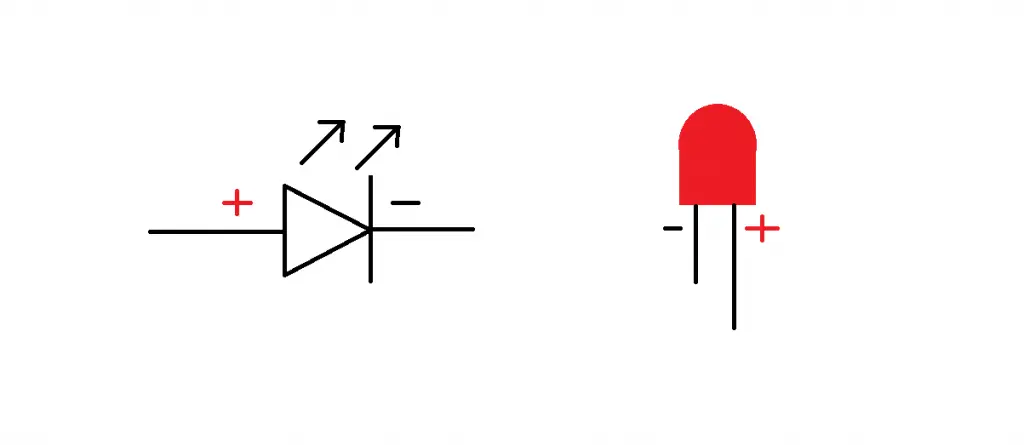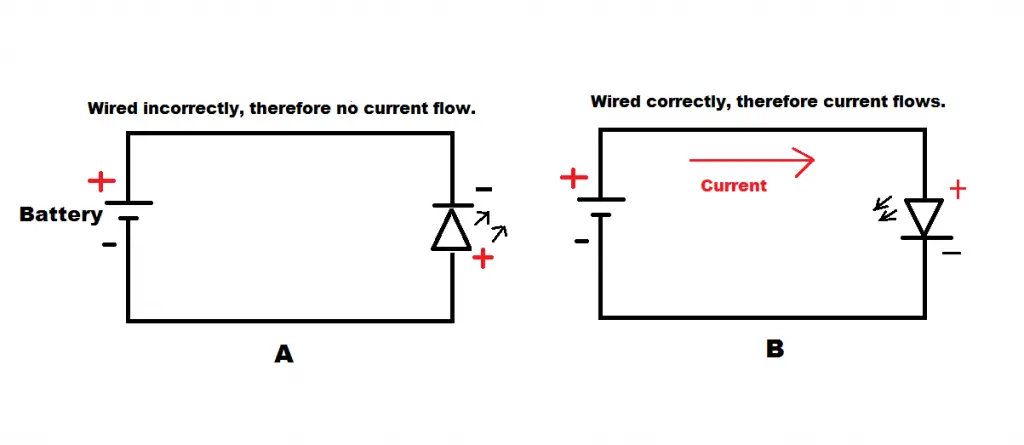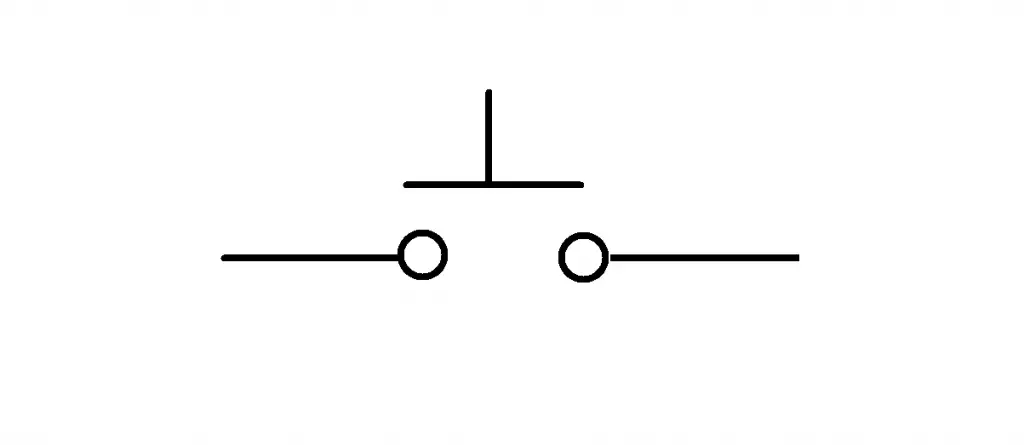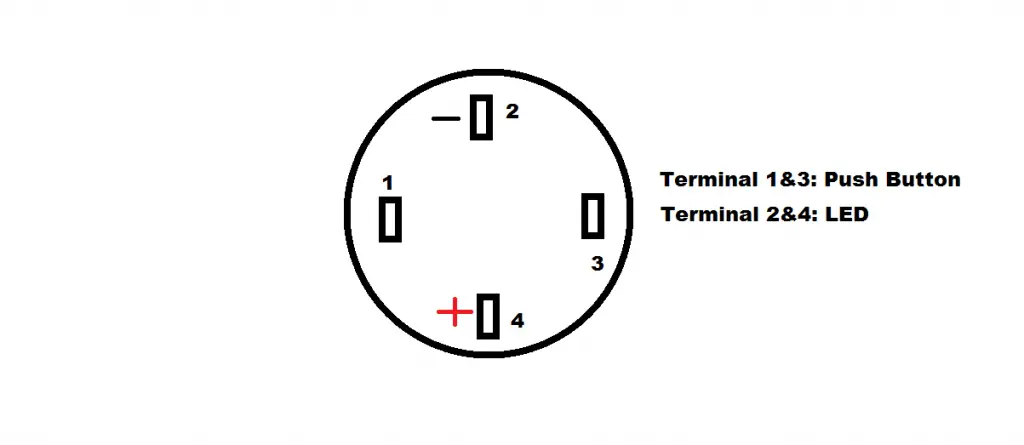Push buttons are a great way to provide input into electronic and electrical systems through a physical push or press.
They are a switch mechanism that consists of a spring that returns the button back to its original position after being pressed.
Push buttons come in a variety of shapes and sizes to suit the application it will be used for that can include things like Telephones, Arcade Machines, Calculators etc
But, do push buttons have polarity? A standard push button does not have polarity. A standard push button has two terminals which do not have polarity, so the direction it is wired does not matter.
However, a note needs to be made that some push buttons contain Light Emitting Diodes (LED’s) which do have polarity.
Push button with LED’s will have four terminals. Two of these terminals will be for the LED and will need to be wired the right way due to it having polarity.
What is polarity?
Before diving into why a standard push button does not have polarity, let us get a better understanding of what polarity is.
Without going into too much detail, polarity refers to components having two poles; Positive and Negative.
You might be familiar with a battery and its Positive and Negative terminals. Due to this it is said to be polarised.
A chemical reaction inside the battery causes a charge (known as current) to flow from the positive terminal of the battery to the negative terminal.
Much like a battery, many other components have a polarity due to the way they are constructed.
It is important to remember that the way a component is constructed largely determines whether it has polarity or not.
They also have Positive and Negative terminals.
Below are common components that have polarity:
- Diodes
- Light Emitting Diodes
- Electrolytic Capacitors
- Integrated Circuits
- Transistors
- MOSFETs
- Voltage Regulators
Let’s take a look at a Light Emitting Diode (LED) in a circuit with a battery. Below is the circuit symbol of an LED. As you can see, it has a Positive and Negative terminal denoted by the positive and negative symbols respectively.

In the diagrams below we have connected the LED to a battery.

In diagram A, the LED is wired incorrectly. It’s positive terminal is connected to the battery’s negative terminal, while its negative terminal is connected to the battery’s positive terminal.
In this instance current will not be able to flow and power through the LED, and there is even a chance of damaging the LED.
In diagram B, the LED is wired correctly. The positive and negative terminals of the battery and LED are wire together. Now, current can flow and power the LED.
Why a standard push button does not have polarity
Now that we understand polarity a little better, we can take a look at the standard push button and see how it does not have polarity.
As mentioned earlier, polarity comes down to the construction of components. So let’s take a closer look at the standard push button.
The circuit symbol of a push button can be seen below.

A push button is constructed using mechanical parts which have the ability to conduct electrical current (which can be any metal that is good at conducting electricity).
It does not have any materials that give it a polarity. It is simply made of materials that allow current to flow when the button is pushed.
Think of it as a piece of wire. Current will pass through that wire no matter how it is wired as it does not have polarity.
Also, inside the push button is a spring which returns the button to its original position after being pressed.
The button itself is made of a non-conducting material such as plastic to protect the user from any currents when they push the button.
Certain type of push button that have polarity
Now, I have discussed how a standard push button does not have polarity. However, there is a certain type of push button that does have polarity and must be wired correctly.
This type of push button contains a Light Emitting Diode (LED) inside it which illuminates when the button is pressed. Below is the circuit symbol for a push button with an in-built LED.

As you can see, this type of push button has four terminals, two for the push button itself, and two for the LED.
While it does not matter which two terminals of the push button are wired to the negative or positive terminals of the battery, it does matter how you wire the two terminals of the LED to the battery terminals as it has a polarity.
A common application where these types of push buttons are used, and you might be familiar with is in Arcade machines.
What is the main purpose of a push button?
A normal toggle switch in an electrical/electronic circuit provides a way of powering a circuit with more permanence.This means when the switch is closed it remains in that state until you reverse its position.
However, a push button is quite different compared to a normal toggle switch. A push button only allows current to pass when it is being pressed. When the push button is released, the circuit is broken and therefore no current can pass.
That is why push buttons are commonly referred to as Momentary switches, because they only provide power to a circuit ‘momentarily’.
So, their main purpose is to be able to provide power to a circuit only when their button is being pushed. Due to this, the push button sees itself being used in a variety of applications.
A common application of where you would use a push button and not a toggle switch is a Drill. The main reason you would use a push button and not a toggle switch, is because of safety reasons.
Since the drill is a dangerous piece of equipment, you only want to operate it when you are pressing the push button. As soon as you release the push button you want the drill to stop. Using a toggle switch might be hazardous and cause some issues.
Also, push buttons can be used as inputs to microcontrollers which can read a button press as an external event.
Applications where a push button can be used
As the main purpose of a push button is to provide momentary power to a circuit, this opens up many possibilities and applications where a push button can be used.
Below are some of the many applications where a push button can be used:
- Car Ignition
- Mobile / Telephone keypads
- Laptop / PC keyboards
- Arcade machines
- Calculators
- Elevators
- Kitchen Appliances
- Emergency stop buttons
- Guitar Pedals
- Gaming controllers
Is there an alternative to using a push button?
So, the main purpose of a push button is to provide monetary power to a circuit when it is pressed.
Is there an alternative type of switch that can provide the same kind of functionality as a push button?
While the push button is the standard go to when a momentary switch is required, there are other certain switches that provide a similar momentary type function like the push button. These include Micro switches, reed switches and capacitive touch sensors.
As long as they are momentary by nature they can be used as an alternative to a standard push button.
How to determine whether a push button has polarity or not
If you have a push button lying around, or have purchased one and are not sure if the push has a polarity or not, do not fear, you will be able to tell if the push has polarity or not by looking at its terminals.
If the push button that you have has two terminals, this is an indication that it does not contain a LED and therefore will not have any polarity. You can wire the push button either way.
However, if the push button has four terminals, this indicates it might possibly have a LED and therefore has polarity.
The LED terminals of the push button will be marked with a + and – sign for its positive and negative terminals respectively.
But, there are push buttons that do have four terminals and no LED. These push buttons will not have any positive or negative markings.
Another way of finding out if a push button has polarity, is to look at its datasheet. The datasheet will be provided on the website of the manufacturer who created the push button.
Benefits of a push button not having polarity
There are many benefits of a push button not having polarity.
For instance, you do not have to constantly worry about which terminals have to be wired to positive or negative, constantly having to consult the datasheet.
If you do happen to wire the push button the wrong way, you are not going to damage it as it does not have a polarity.
This all saves time in the long run!





